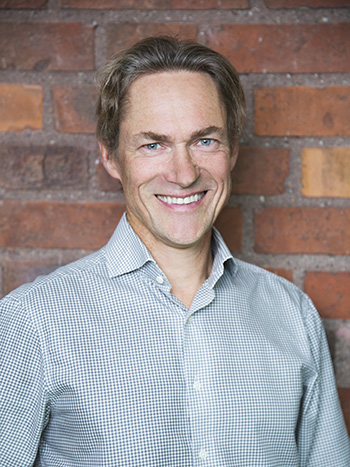Debate article: The KTH carbon footprint – how serious are we, really?
Recently, I was invited to be part of a delegation to the US. A dozen or so KTH representatives - along with about as many partners from private and public spheres - were to join a 1 day event on the other side of the Atlantic, promoting cross-sectoral and international collaboration. Great fun! But since I have decided to stop flying, I had to decline.

A few days later I found myself discussing a research application with another partner. In their preliminary plan, I counted no less than 38 inter-continental flights (emitting around 100 tonnes of CO2 equivalents). Again, I had to pull the brake. This time with less drastic consequences; we agreed to trim the number of flights and to strengthen other forms of interaction.
These two incidents made it clear to me just how steep is the uphill battle for KTH to become climate neutral in 25 years’ time. And to cut our CO2 emissions from travelling by 40% in 2025.
Oh, you didn’t know about ? They are part of our commitment to the Climate framework for Swedish universities , passed by KTH President last December. Here we declare KTH as a leader for sustainability transformation, including combating climate change. And international flights are one of the biggest climate polluters at KTH.
Our new ambitious goals are worthy of praise. But how serious are we? I mean, really? What kind of measures do we need to put in place to cut our flight emissions by 40% five years from now? Our previous goal was to reduce emissions by 20% between 2015 and 2020. Instead they increased (see fig 1).

Figure 1. The CO2 emissions from KTH staff air travel, total and per staff-year equivalent. Flights ordered outside the official travel agent not included. Source: KTH, Report on KTH Royal Institute of Technology’s overall sustainability goals 2018 .
I’m not advocating a general ban on flying, just because I stopped myself. Our vice President for sustainability, Göran Finnveden, once said it is a question of “why we travel, who should travel, and how we travel” . This is an excellent starting point for a strategic discussion. In such a discussion we might find that it is indeed reasonable to send a dozen of us to the United States for a one day meeting. But the problem is that we rarely have that discussion. If we are serious about our own footprint we need concrete policy measures that make a difference. And we need them yesterday.
The way things stand, it is up to the individual staff member to make choices about her/his own footprint. As Wouter van der Wijngaart proposes in his inspiring debate piece , there are actually many things you can do. But why should these hard decisions be left to the individual? Turning down invitations or speaking “inconvenient truths” to colleagues and partners are not easy things to do. It often feels like being on the losing end of the equation, watching everyone else flying off to the next cool conference or glossy meeting.
Reducing our carbon footprint is a management issue. The new climate fund at KTH promotes low-carbon mobility and collaboration through an internal carbon tax. Think of a Robin ClimateHood, taking from the dirty and giving to the clean. The updated plan of action for reducing travel emissions also contains many good things, such as data collection, reviewing travel policy, and lifting our videoconference capability (which currently is an embarrassment for KTH).
But it will not be enough. The practice of flying is deeply entrenched within academia and we simply need stronger incentives to change our habits. Why not - for example - carbon budgeting? The UK government has a system of devolved carbon budgeting in place since 2008. It aims for zero emissions by 2050 and applies to all government entities. Ten years ago, I collaborated with British foreign service employees who would say “we won’t be coming for the next meeting, our carbon budget is exhausted”. But our collaboration went on anyway.
The coming two years will be decisive if we want to meet our goals. Our own transformation will not come without a price. Leadership is easy when everyone gains in the short term. But the test of true leadership comes from its ability to convince people to make sacrifices. To give something up now so that we can win in the end. What did Winston Churchill say on the brink of WW2? “I have nothing to offer you but blood, sweat and tears.”
David Nilsson, Associate Professor in History of Science, Technology and the Environment, KTH

